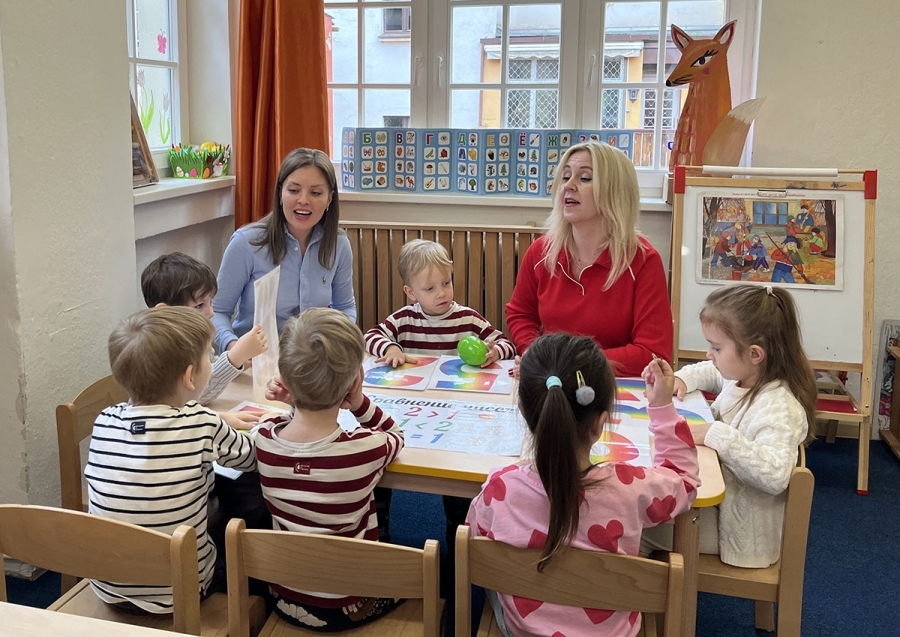Olga Savina: 'Our children know how to play, develop, learn and, above all, negotiate with each other
The Prague Express visited the Top Top Residence - an international preschool that has been operating in Prague since 1999. Since 2022, the preschool, or more precisely the children's centre, has had its own two-storey building in Prague's bohemian Vinohrady district (Velehradská 21). Today it is practically the only bilingual (Russian and Czech) preschool in the Czech Republic, and during its 25 years of operation it has gained real experience in gently adapting Russian-speaking children to the Czech environment. That's why Prague Express decided to visit this place.
I was met at the entrance by Olga Savina, a teacher and head of the kindergarten. In order to convey the atmosphere here, the mood of the children and the professionalism of the teachers, we did not hesitate to look into each group and observe from the outside what was going on in the kindergarten.
The first question I wanted to ask Olga was about the children's comfort and, more importantly, their safety:
— How many children are there in each group at your nursery?
— We accept up to 12 children in each group. We strive to provide each child with an approach that best suits their individual characteristics and needs. The group we are talking to now consists of five-year-olds.
In the neighbouring wing of the building, there are several more rooms, including a bedroom. There, teachers work with a group of four-year-olds. On the first floor, there is a group of three-year-olds. In addition to the main room, there is a large playroom where children play sports, dance, and put on theatre performances. There are dining rooms, toilets and changing rooms on each floor.
For the youngest children, two-year-olds, we have a branch of the kindergarten in Prague, at Slovenská 19.
Olga (in the photo above) and I moved to another group, where English lessons were taking place (in the photo below).
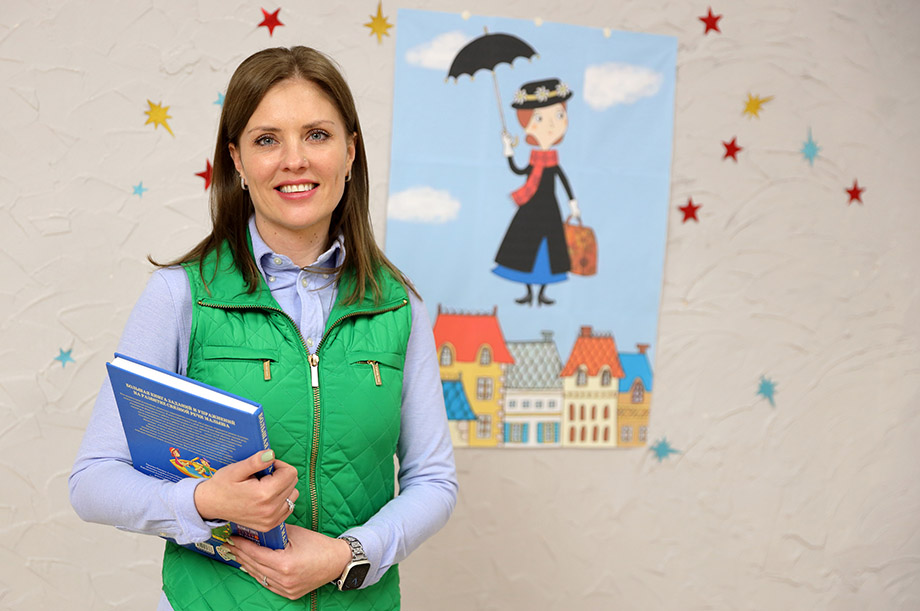
I immediately had a question about the educational staff at the nursery.
"Let me start by saying that we have two teachers working with each age group. I am a professional teacher myself. We pay particular attention to the education of our teachers, which is why we only employ qualified teachers at our nursery.
We continued our conversation, and I noted how natural and truly professional the teachers were in their interactions with the children.
Well, the children saw that I was watching them and immediately ran up and hugged my legs. I sat down on the soft carpet, and we started playing.
One little boy handed me a toy and said, ‘My name is Lesha.’ Another little boy also wanted attention and quickly announced, ‘My name is Sasha.’
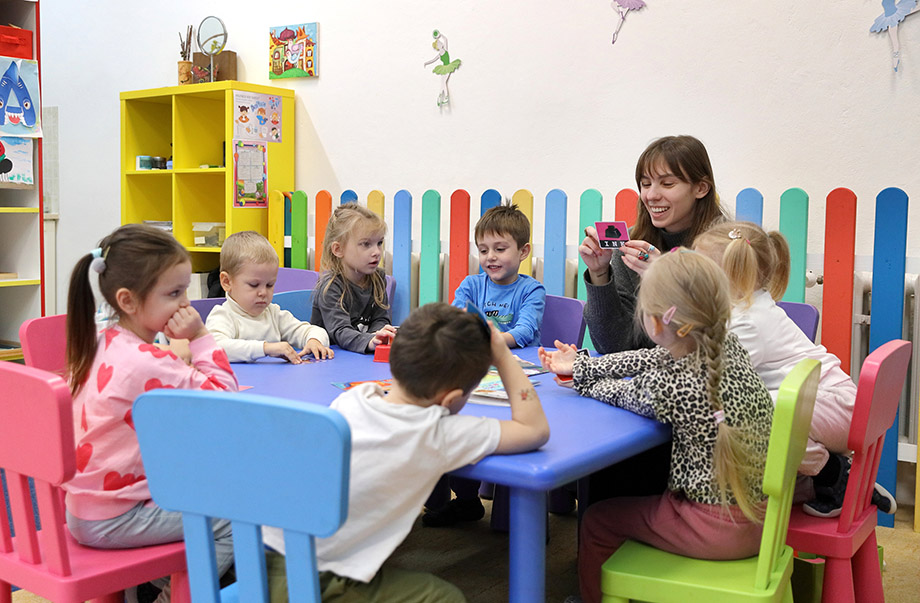
I turned to Olga:
'You have created a real children's world here!
We focus on free play, which enables children to 'live their age' and learn to interact with the world. This approach shows how kindergarten can be a space for self-expression and the first steps towards conscious discovery. We do not seek to accelerate a child's development. Preparation for school takes place at a pace that is accessible to preschoolers and through activities that they can understand. Our aim is to create conditions that allow children to have a fulfilling preschool experience. This lays the groundwork for a child's successful transition to the next stage of education. The main thing here is the formation of what are known as 'age-related developments'. At this age, this primarily takes the form of creative imagination, which later becomes the basis for theoretical thinking. Unfortunately, many parents, in an effort to prepare their child for school, fill all their time with additional activities, believing this to be the best approach. However, in essence, parents are depriving their children of the opportunity to play, and play is much more than just entertainment. It is through play that children learn to use their imagination, interact with others, negotiate and resolve conflicts.
Therefore, I would recommend that parents listen to their children and take the choice of kindergarten very seriously.
I decided to ask the children themselves what they liked best about the food at kindergarten. They all replied in unison, 'Afternoon snacks and borscht!'
But I wanted to find out more from the children themselves, especially the younger ones, what they were being fed, because nutrition is a very important part of kindergarten. ‘Today we're having a cooking class, and we're going to make croissants ourselves,’ the children replied in unison.
Olga added:
— The basis of our diet is hypoallergenic dishes. You won't find fried chicken or fried potatoes here. We offer the children vegetable and chicken broths, borscht, porridge, mashed potatoes with cutlets, liver pancakes, pasta, pilaf, vegetables, fish, the only meat we have is chicken and turkey... For afternoon tea, in addition to fruit, we serve pancakes, fritters, casseroles (by the way, Olga treated me to tea with a delicious and filling casserole from the children's menu. — Author's note) and, of course, sweet pastries: we bake our own cakes, cookies, buns, puff pastries, and today we're having chocolate-filled croissants. The theme of the week at our kindergarten is ‘Professions,’ and today our kids will learn about the profession of a chef.
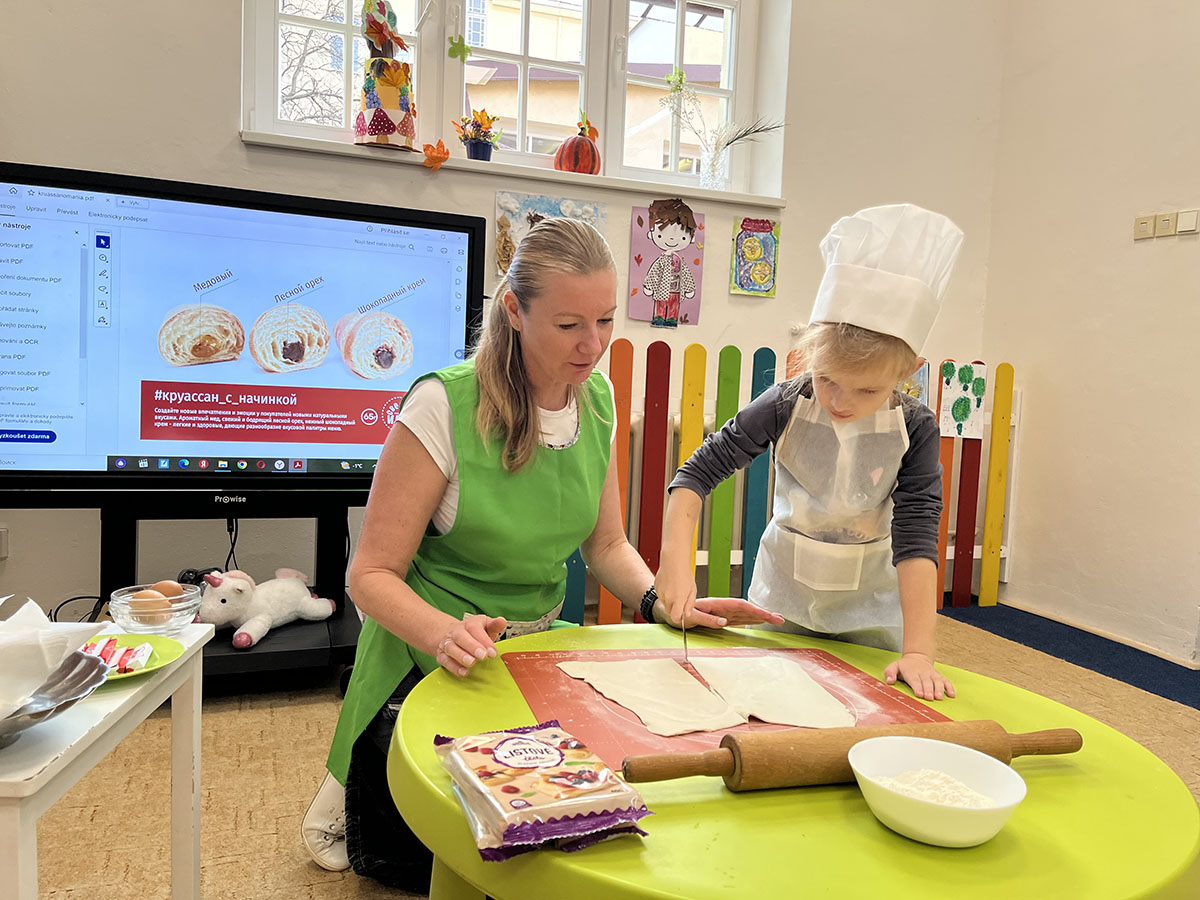
The children put on aprons and chef's hats, and the teacher began to talk about the process of making croissants. Croissants with fillings were displayed on a large interactive screen, and as I watched the children, I felt that they had completely stopped paying attention to Olga and me: they were completely absorbed in this new culinary creation.
Each child approached the table, cut off a piece of dough, rolled it out, added the filling and a piece of chocolate, then rolled the dough up to form a croissant, which was then ready to be placed in the oven.
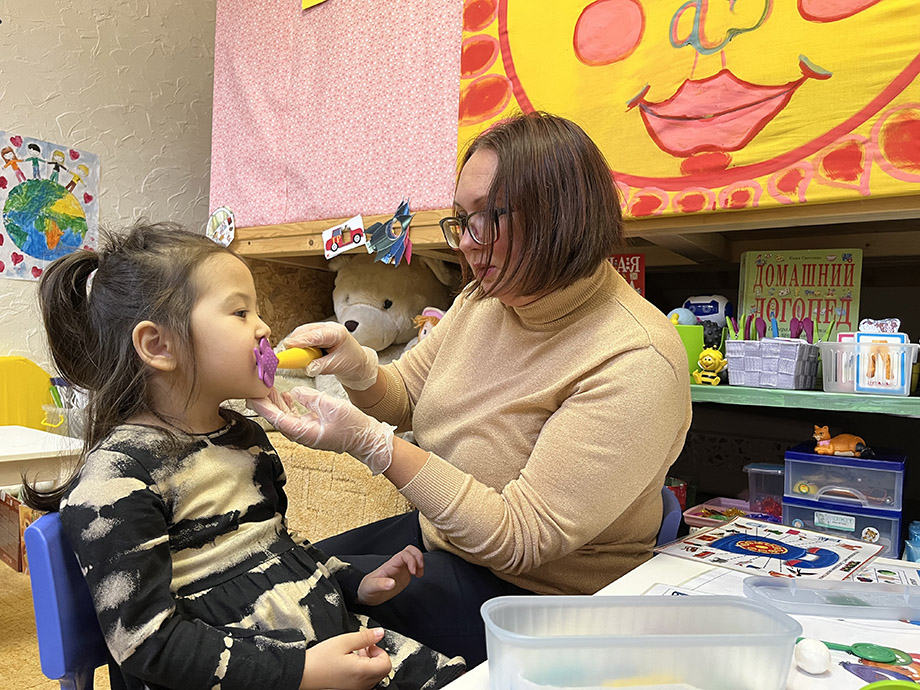
Meanwhile, we went down to the first floor and entered the speech therapist's office.
— Today, speech therapy sessions are in high demand. We use patented Russian methods of working with children using special devices that give very good results. We work on the child's speech, work on sounds, and motivate them to express themselves through beautiful, literate speech.
— Olga, is there a need for a child psychologist at the kindergarten?
— We have been working with professional child psychologists and neuropsychologists for many years. I believe that a child psychologist is sometimes necessary, both at school and in kindergarten. Some parents do not understand what to do with their child in a given situation, because crises often begin in children as early as three years old. Specialists help not only the child, but also the parents to find the right approach to their child.
When we were passing the changing room, I had a question:
— How are practical tasks solved in kindergarten, for example, do you teach children to tie their shoelaces or use cutlery correctly?
"Boris, let's go to the classroom and we'll show you everything you're asking about. Parents often ask questions like that, and we have special wooden boards with different fairy-tale characters and holes in them, and the children learn to tie shoelaces on these boards first, again in a playful way.
The children were attracted not so much by the lacing itself, but by the brightly coloured boards of different shapes, and they found it interesting to thread the laces through each hole. Through play, they develop self-care skills.
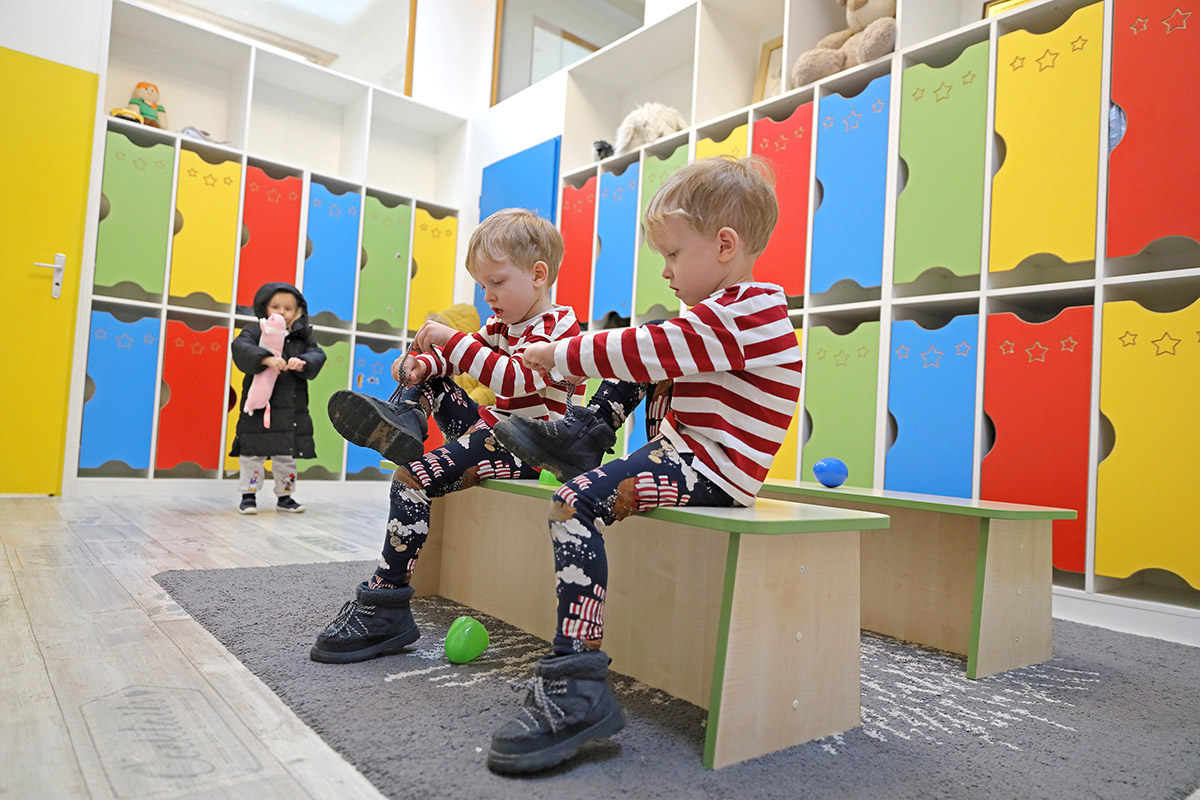
These children already know how to lace their shoes; we taught them, and now one group is going for a walk, and you will see for yourself how the little ones are already lacing their shoes on their own.
I hear from parents that sometimes Czech kindergartens do not accept children who cannot take care of themselves, for example, sit on the potty or hold a spoon.
We teach the children all of this. Our goal is to teach children to dress and undress themselves (including buttoning buttons, zipping zippers, tying shoelaces and hats), go to the toilet on their own, wash their hands, blow their noses into a handkerchief, and know how to use a rubbish bin.
While we were talking, the process of making croissants was coming to an end. The children's faces were beaming with excitement, and they gathered around a large plate of croissants they had made themselves with genuine curiosity and joy! We took a photo.
The teacher said that everyone would try their croissants for afternoon tea, but for now it was time for quiet time. The children's beds in a separate room had already been set up, and the children began to get ready for bed.
Meanwhile, Olga and I went to her office, where we continued our conversation.
‘Olga, as I noted, there is no problem with attachment to gadgets, such as iPads or phones, in the kindergarten?’
‘Gadgets are strictly prohibited in our kindergarten.’
As you can see, the teachers fully involve the children in every learning process, whether it is a cooking lesson, an English or Czech lesson, or a game. Another mandatory part of the day is a full afternoon nap. This is a time when children's physiological and emotional balance is restored. There can be a hundred reasons why a child won't fall asleep, so it's important for teachers to prepare them properly (breathing exercises, reading fairy tales and stories, singing lullabies).
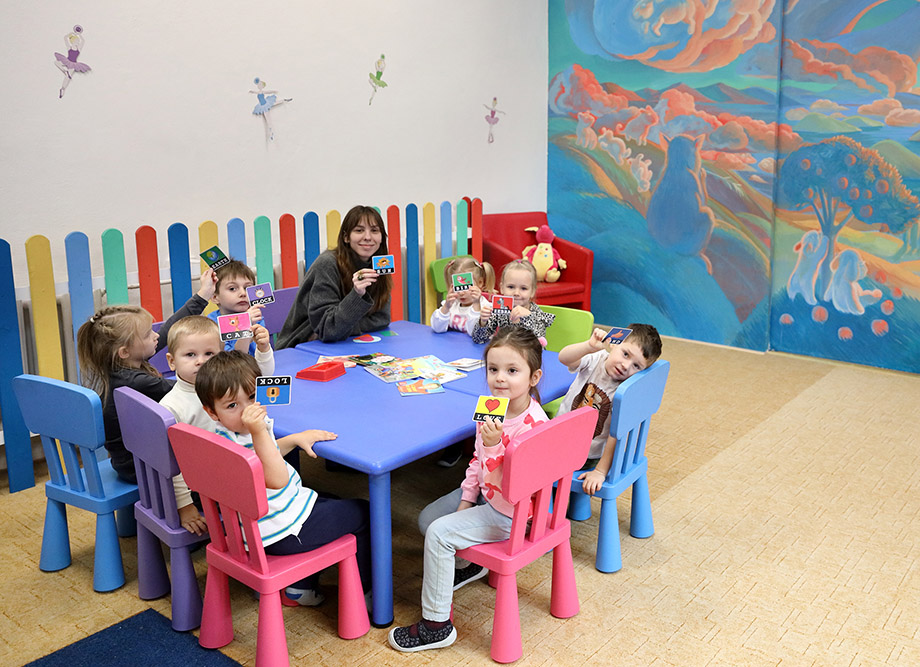
— I noticed that Czech children who do not speak Russian also attend the kindergarten. How much attention is paid to language learning in the kindergarten?
— Yes, you are right, in this case, the parents wanted their children to be able to speak Russian in addition to Czech and English.
In our kindergarten, children also study Czech and English with native speakers.
Learning takes place through play, mostly on a subconscious level. Young children are like sponges, they absorb information and very soon begin to understand speech and speak a foreign language themselves. On top of that, children have excellent memories. If a child remembers something well in childhood, it stays with them forever. Learning foreign languages shapes children's flexible minds, creates neural connections, and makes them more interesting and versatile people. But we believe that children should first master and develop their native language, which is spoken at home. This is the foundation of a child's mental health.
One of the groups is now starting maths lessons using a multimedia screen. Let's go and take a look.
The teacher works with each child individually, giving them their own task and explaining it to them. The child then presses the answer on the screen, and the teacher explains to all the children why it is right or wrong.
When teaching children, we emphasise play because, as you can see, children are active and need freedom of movement. Children express themselves through play, and we teach them to negotiate with each other, which will undoubtedly help them in the future. When two children can agree, compromise and remain satisfied, this is very valuable in today's world. We are a multinational kindergarten, and politics is completely outside its walls. And among the adults, wherever they come from, friendly and respectful relationships are maintained.
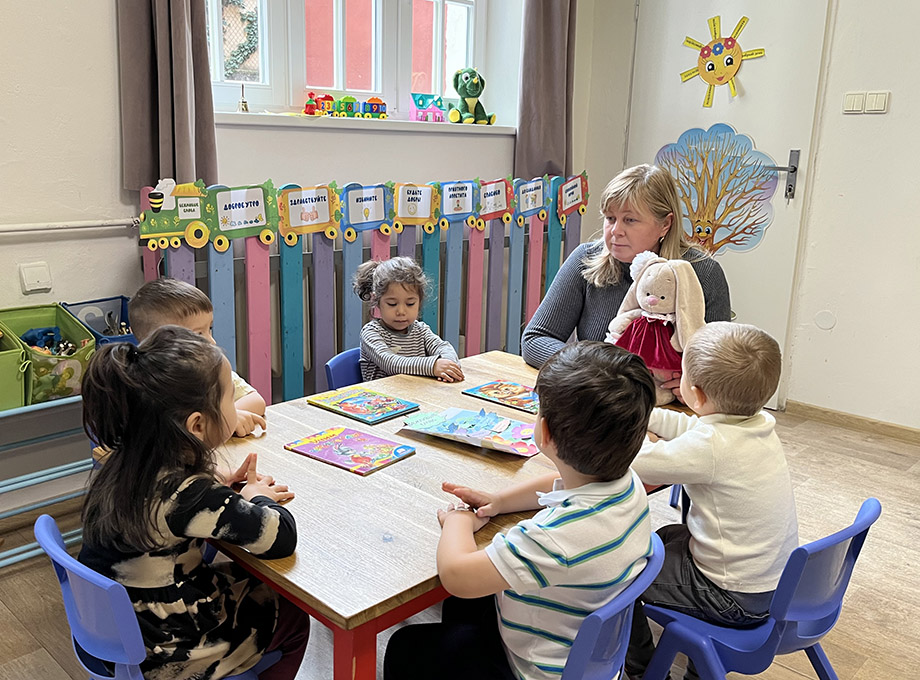
— In the Czech Republic, it is compulsory for children who will turn five before the start of the school year to attend kindergarten for one year. Tell us what children learn during the preparatory year before starting school.
— In addition to what I have already mentioned (taking care of themselves), children learn how to hold a pencil, count, add and subtract numbers, and read syllables. Children already understand both Czech and English. With the preparatory group, we also visit Prague museums.
— Olga, to conclude our meeting, please describe a typical day for a child at your nursery (www.toptopresidence.cz).
The children's centre in Vinohrady opens at 8 a.m. While the children gather in groups, they play, and then they start their morning exercises.
At 9:30 a.m., they have breakfast. Then, from 10 to 11 a.m., they have classes according to their schedule. These may include Czech or English lessons, grammar, reading or maths, etc. This is followed by a walk. There are well-equipped playgrounds nearby where the children play. Then it's lunchtime. From 1:00 to 1:30 p.m., the children get ready for bed, brush their teeth, read a story, discuss it, and from 2:00 to 3:00 p.m., they have quiet time.
After afternoon tea, a choreographer comes to the kindergarten, and the children learn dances, listen to music, and play. Then, in the second half, there is a review of the topics covered and creative activities: the children draw, do modelling, make appliqués, and carry out joint play projects. We teach the children to play in a group. The kindergarten is open until 6 p.m. However, I would like to add that from 6 to 7 p.m. twice a week, the kindergarten offers extracurricular activities: karate and football. Once a week, we put on theatrical performances based on folk tales together with the children.
From talking to the teacher and the head of the kindergarten, Olga, I also learned that parents can bring their children to the kindergarten for specific classes, by the hour, or for a walk, and they can leave their children at the kindergarten on specific days.
Parents can choose classes for their children, such as maths or English, and arrange visits to a speech therapist. And most importantly, what I saw when I visited this kindergarten is that every child here is given individual attention.
Boris Kogut,
media cooperation, photos: Top Top Residence kindergarten

